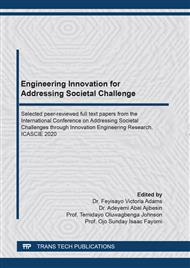p.3
p.15
p.29
p.37
p.49
p.55
p.64
p.76
p.85
Development of a Model for Evaluating the Disaster Risk Around a Pier due to Local Scouring Based on the Observed Weather Information
Abstract:
Heavy rainfall disasters frequently damage bridge piers due to scouring, which resulted in collapse of bridges in many areas in Japan. In this study, we developed a model for evaluating the tilting risk of bridge pier due to scouring around the pier, which fluctuates depending on rainfall conditions based on machine learning. For evaluating the risk potential of scouring, we developed a model based on past disaster data due to scouring around the pier using a neural network. Furthermore, a sensitivity analysis was conducted using the parameters of explanatory variables of the developed model, river level, and distance from the water edge to the pier. The results showed that the disaster risk around the pier due to scouring increased with the increase in river level and decrease in the distance from the water edge to the pier. Additionally, a river level prediction model was developed using support vector regression with the precipitation time measured 5 – 8 h beforehand and river level measured several hours earlier as an explanatory variable. Furthermore, this study shows that the two developed models can be combined with each other to assess the disaster risk around the jetty due to scouring, which varies with rainfall conditions, based on the observed meteorological information.
Info:
Periodical:
Pages:
49-54
Citation:
Online since:
June 2021
Authors:
Price:
Сopyright:
© 2021 Trans Tech Publications Ltd. All Rights Reserved
Share:
Citation:


